Cat Enclosures – What You Should Know
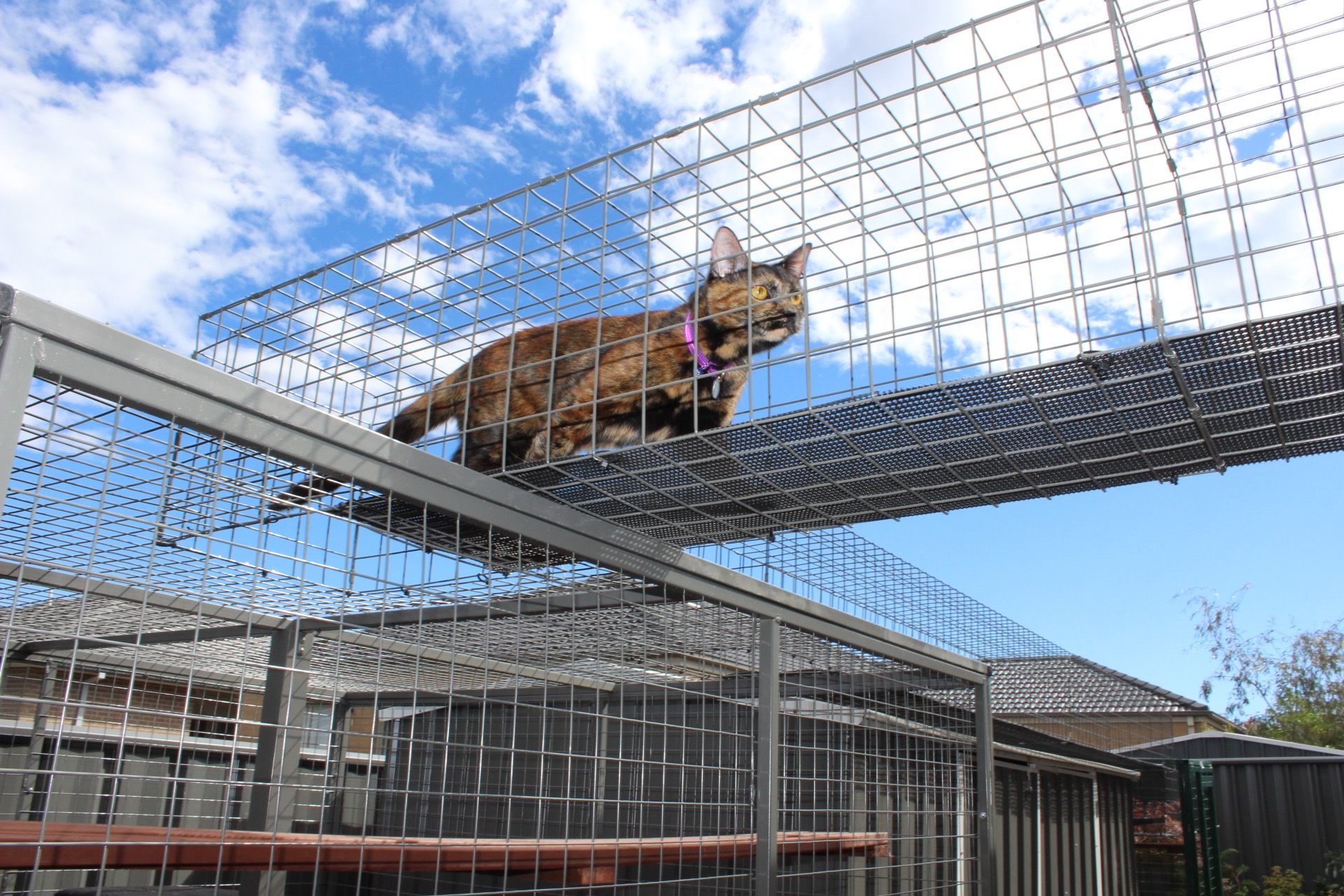
Cats love being outside. The mental stimulation from exploring is priceless and the ability to exercise and keep a pet's weight down is invaluable. Exposure to sunlight is essential for vitamin D production. However, the toll that cats take on our native wildlife from hunting is devastating and that unwanted marking of a cat's territory can quickly turn the nicest neighbour hostile.
One of the biggest concerns that an owner should have about allowing their cats to free roam, should be the risks to their pet's safety. Pet cats are frequently struck by cars, accidentally trapped somewhere, injured in a fight or even taken by a predator such as a fox. There's also the risk of them contracting a contagious illness such as FIV.
More and more councils are either completely restricting cats to their owner's property or implementing cat curfews. Indoor cats are becoming more common and the need for cat enclosures has risen. The good news is, it has become easier than ever to install a cat enclosure.
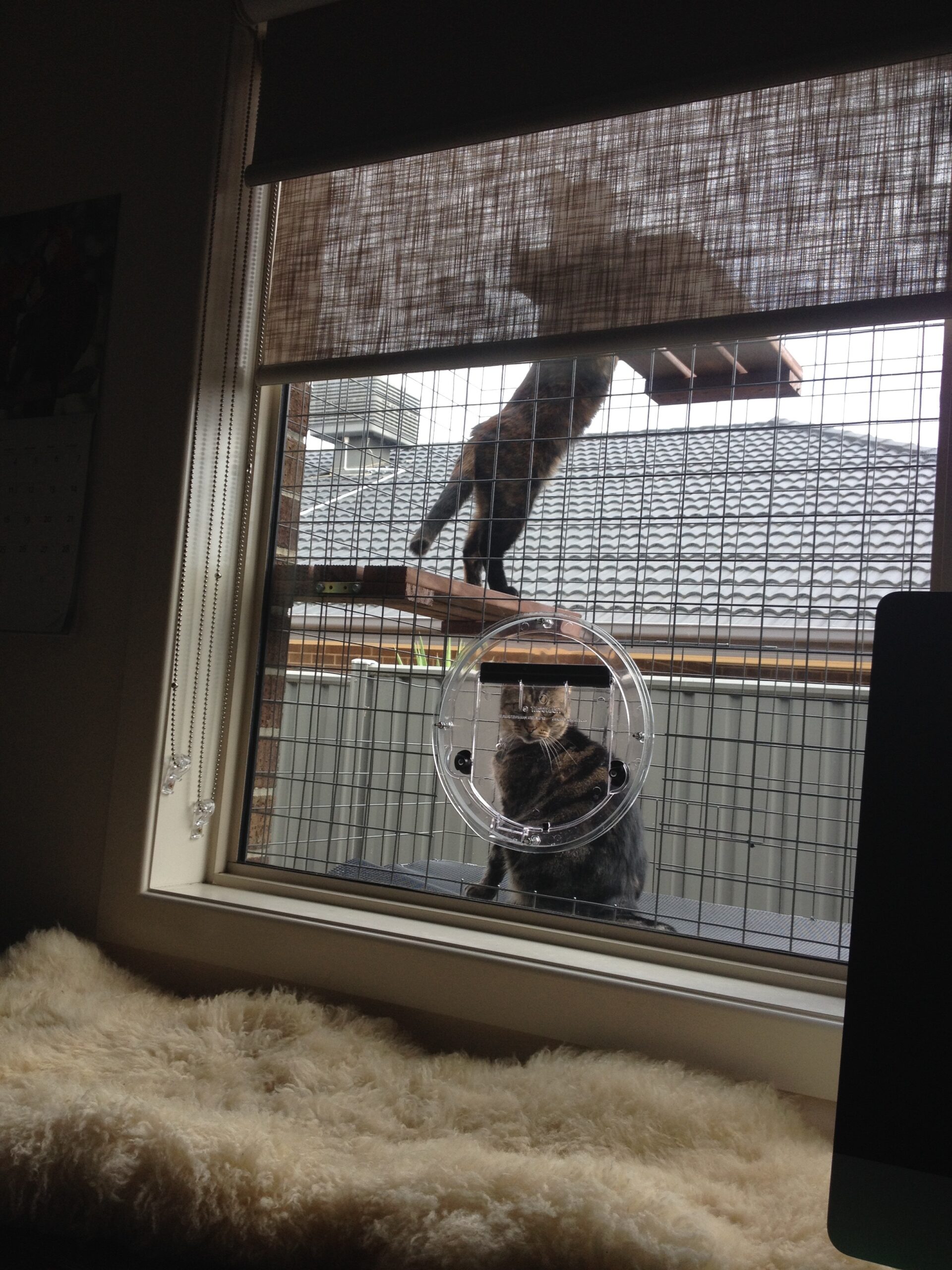
If you don't want to compromise your house security, by leaving a window open or door ajar, a cat door in a window is an easy option. Most glaziers offer installation of a cat window and if you're renting, you can always keep the original window and switch it back out when it comes time to move. The window in the picture above is made from thickened glass, to ensure that the window doesn't shatter and break when a cat runs through at high speed.
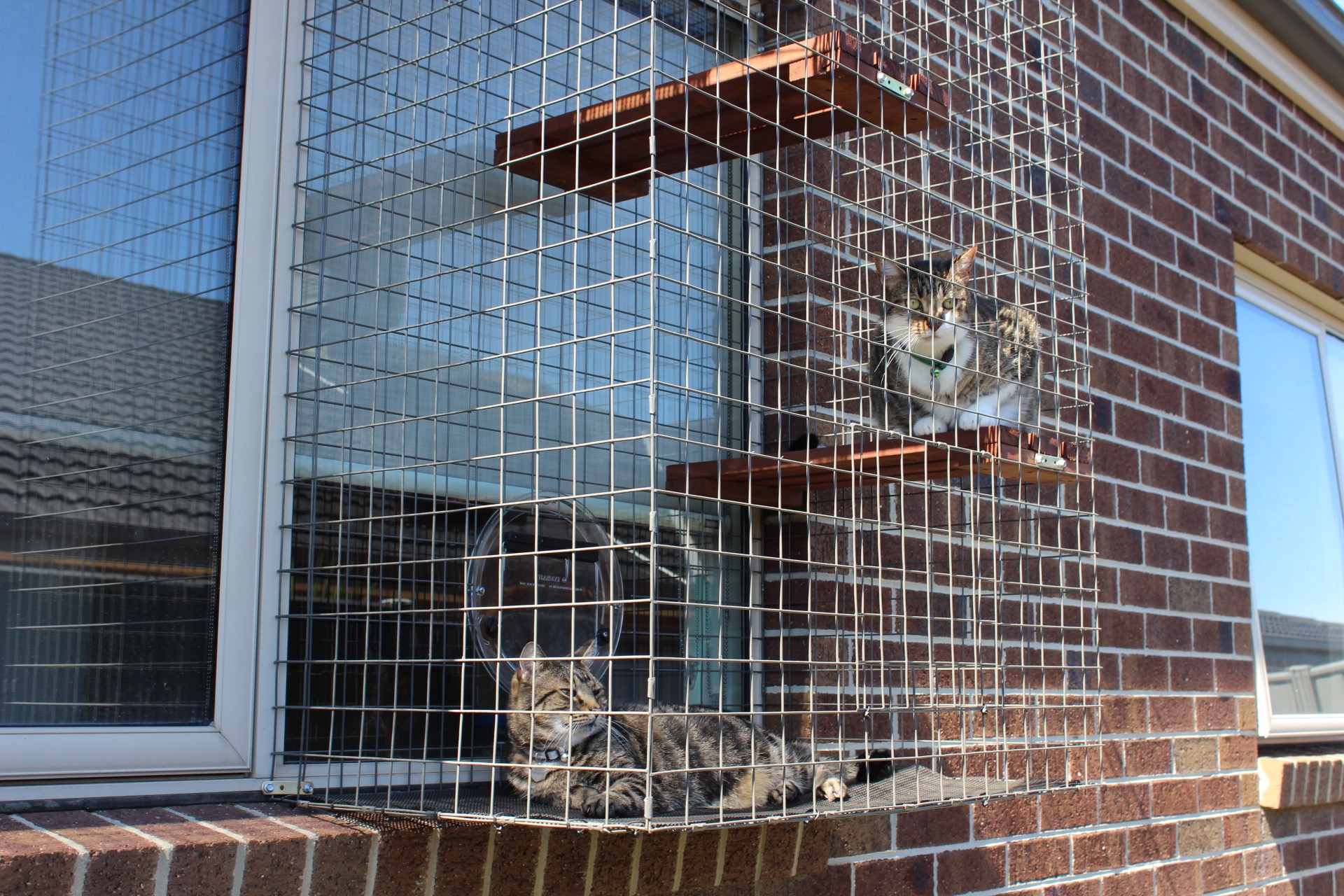
Different Types of Cat Enclosures
There are 3 main varieties of cat enclosures that are commercially available:
- Aviary style/Wire Cat Cat Enclosures
- Cat Net Area Enclosures
- Portable/Moveable Enclosures
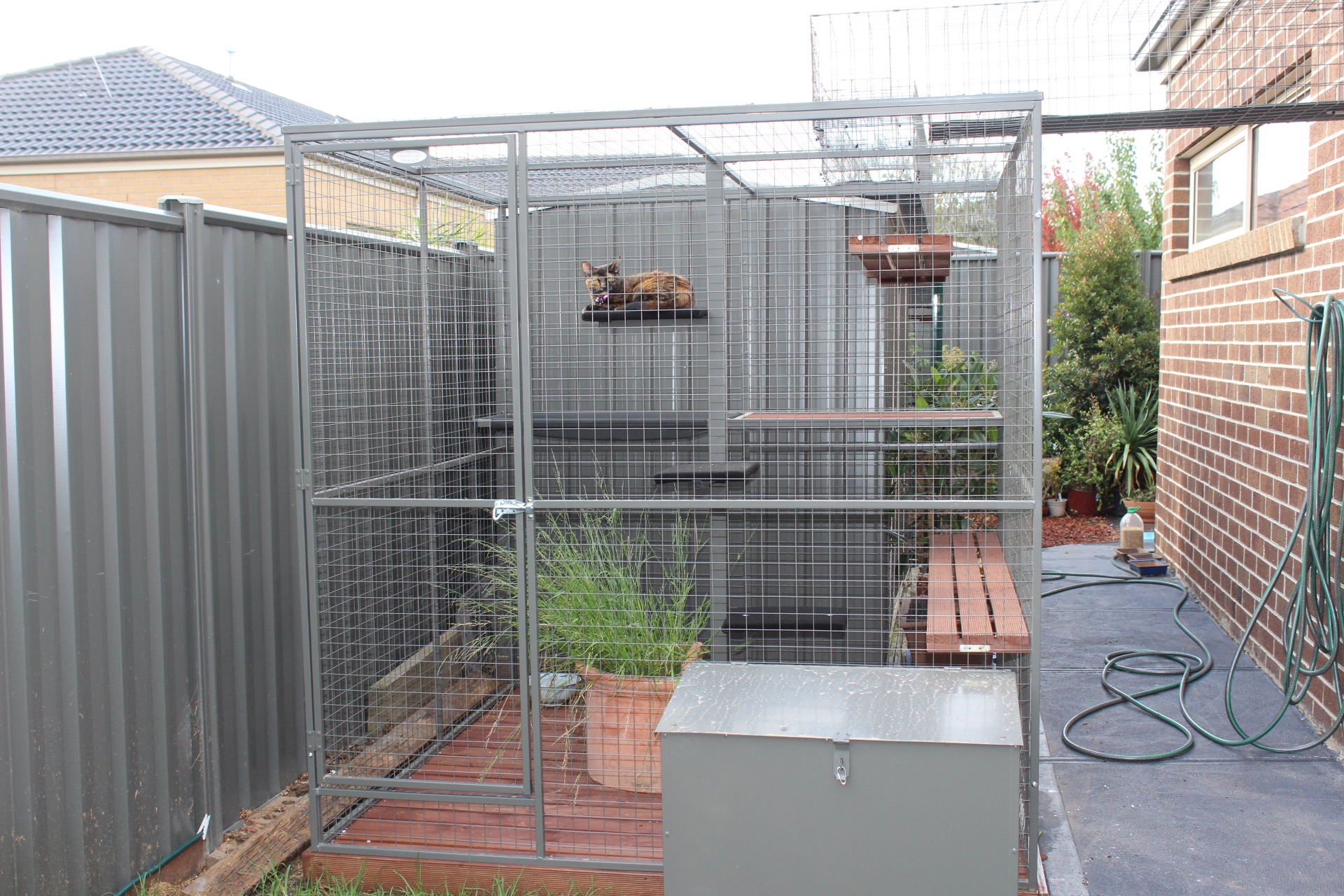
Aviary Style Enclosures
These are typically more permanent by design, sometimes with multiple spaces connected by interlinking tunnels. There are many manufacturers that make these to different specifications. A range of accessories are usually available to fit them out.
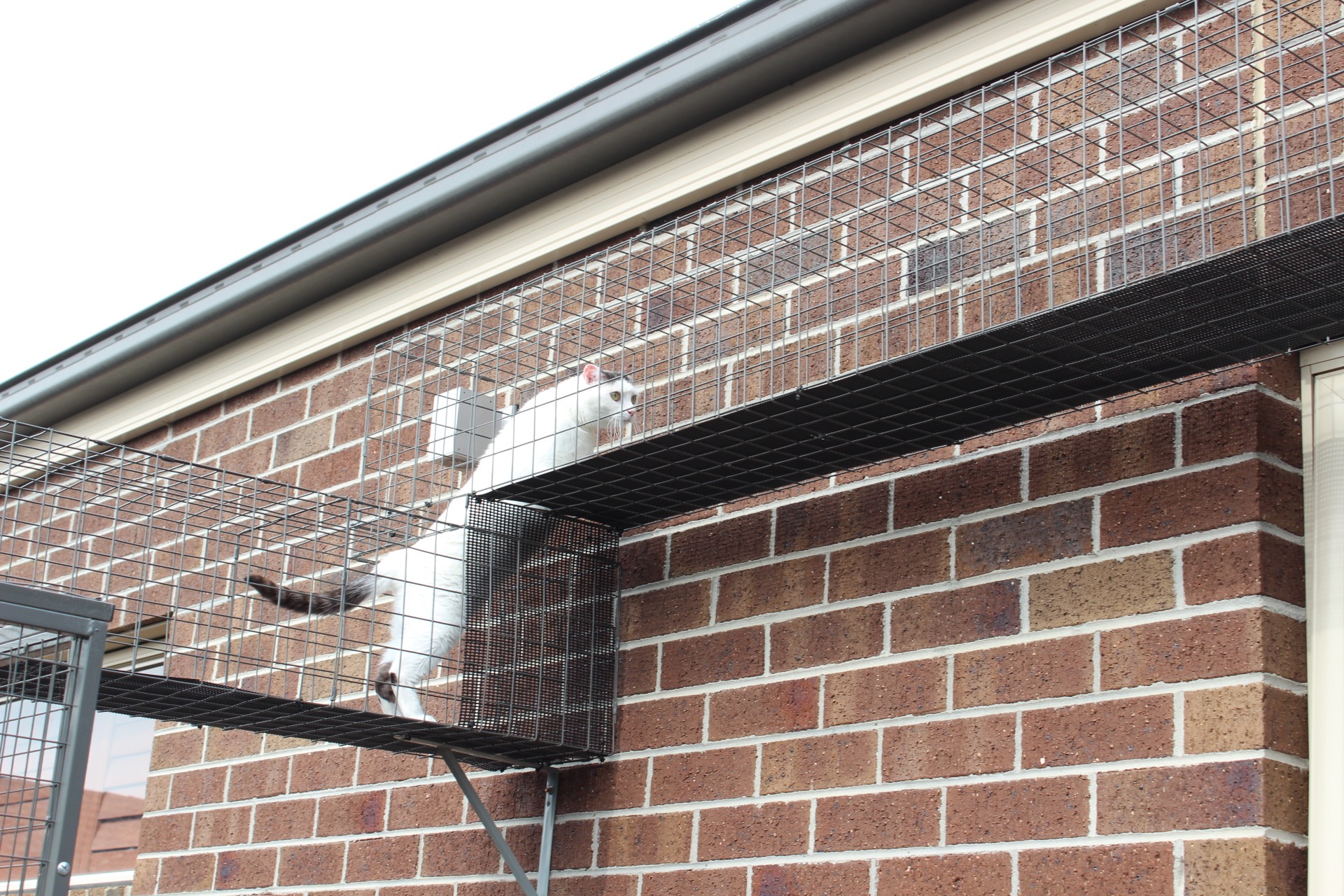
The main advantage of an aviary style enclosure is its strength and ability to hold their shape, making it ideal if you want tunnels leading to different areas.
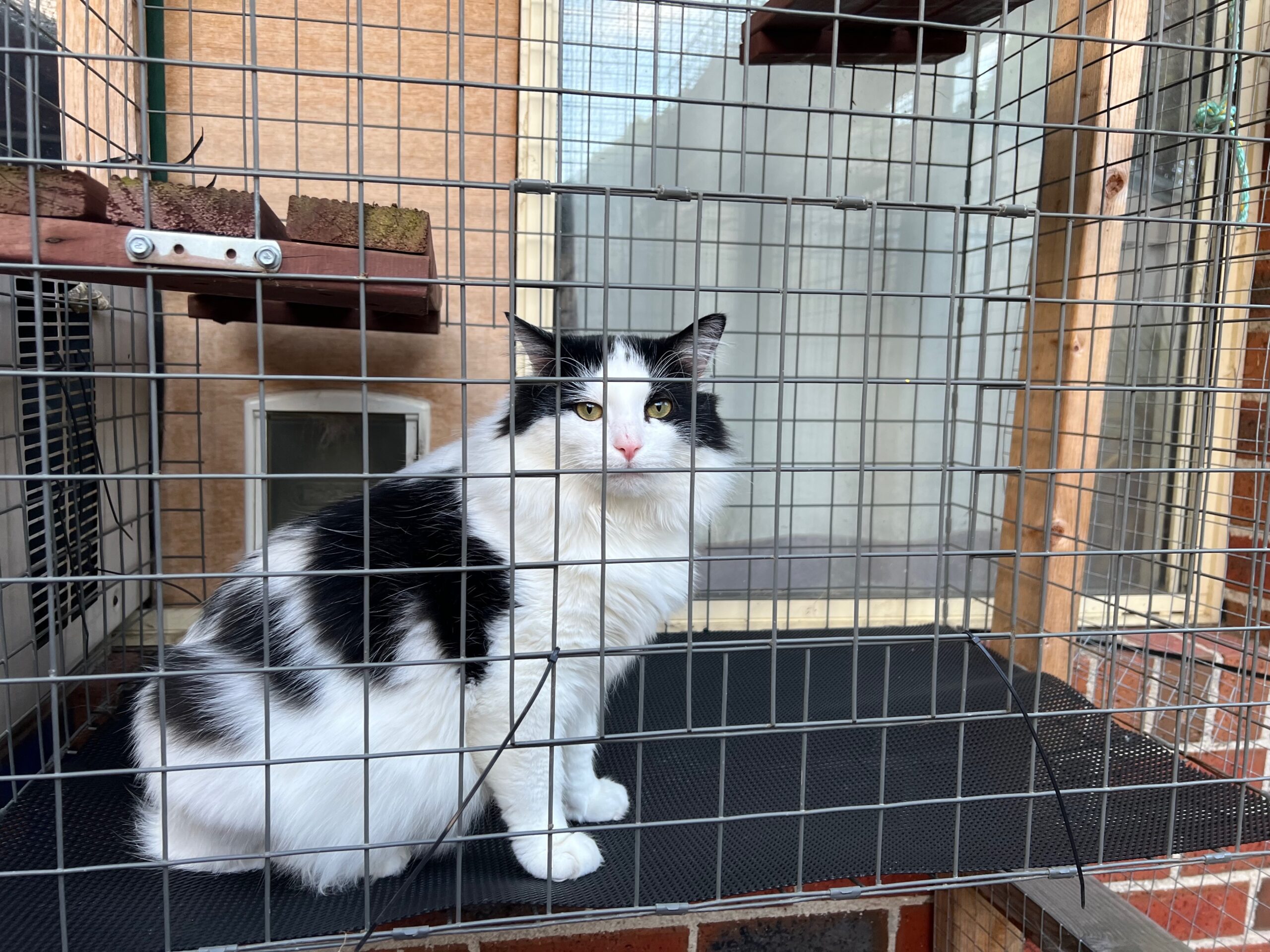
Pro-Tip: Make sure you have some sort of emergency access from the outside. If you look closely at the picture above you can see there is a hinged door that is cable tied shut. If your cat falls ill and is hiding, it makes things a lot less stressful if you can get to them!
Cat Net Enclosures
The use of cat netting has become more and more common. Many people are choosing to enclose sections of their yard for their cats.
There are companies that will do this for you and even options for those who are renting (build a non-permanent wooden frame to staple netting to and you can easily enclose a patio area).
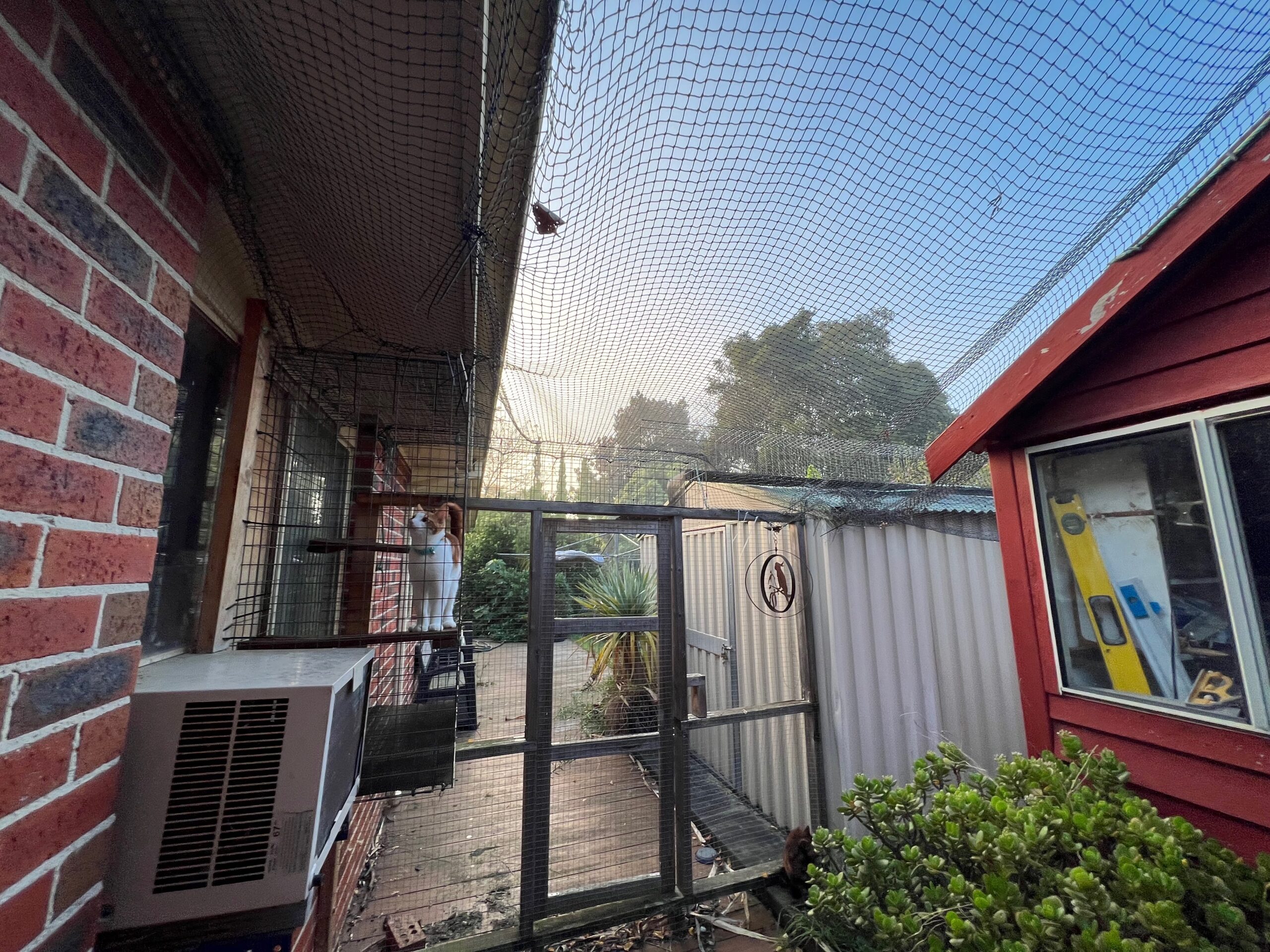
Personally, I use a mixture of both aviary and cat netting. I use the aviary mesh sections to create high up tunnels and the netting to enclose in the side of my yard.
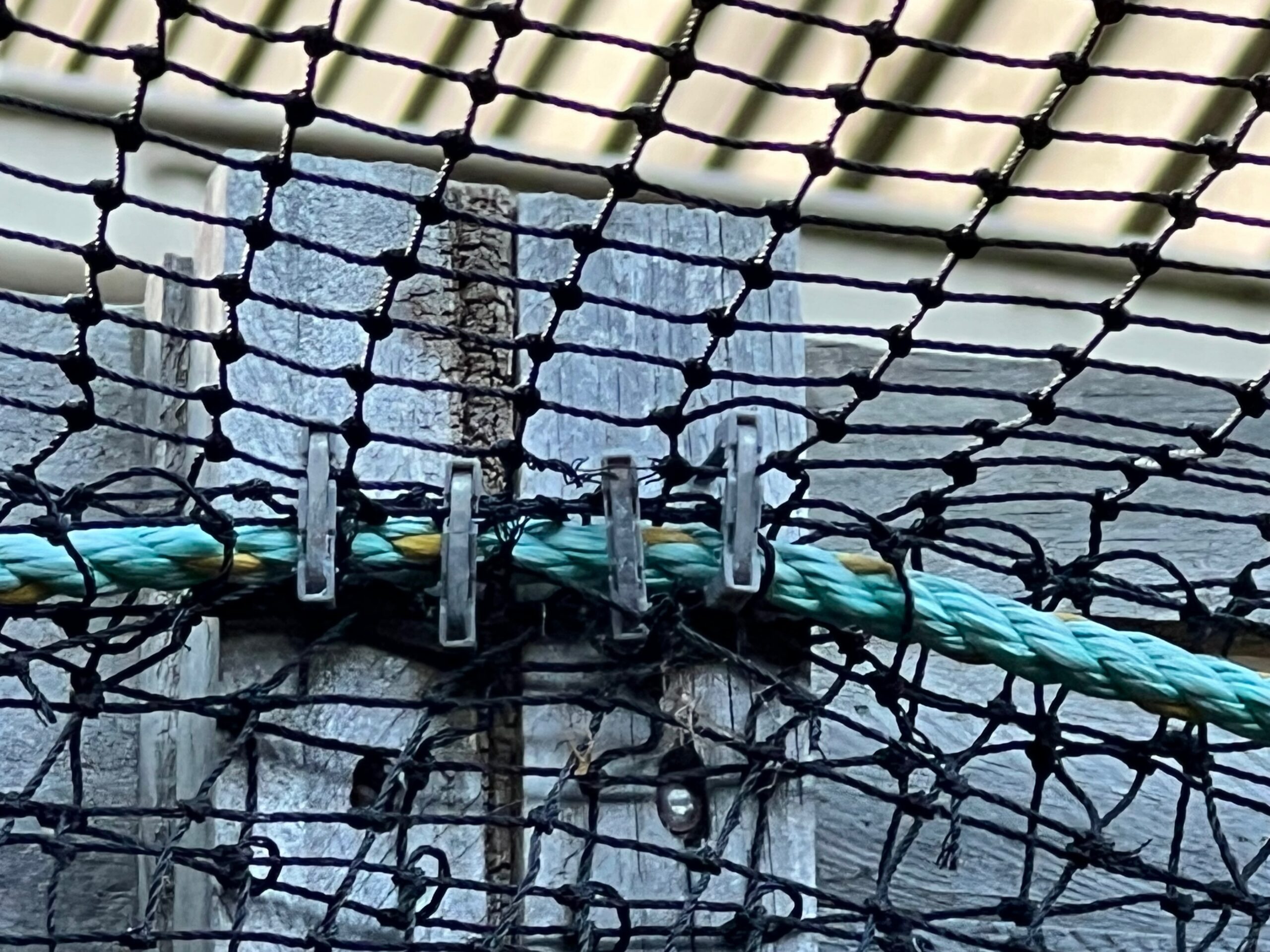
The netting I use is reinforced with stainless wire. It comes by the metre (I got mine on Ebay). I wound nylon rope through the edge of the netting, and used an electrician's staple gun (less likely to fray the rope) to staple the netting in place. Quite literally stapling netting to my fence and the other side to my house or wooden structures I have erected. (See photo above.)
When I needed to join length of netting together I wound the rope through both pieces to join them. Reinforcing the join with cable ties. (See photo below.)
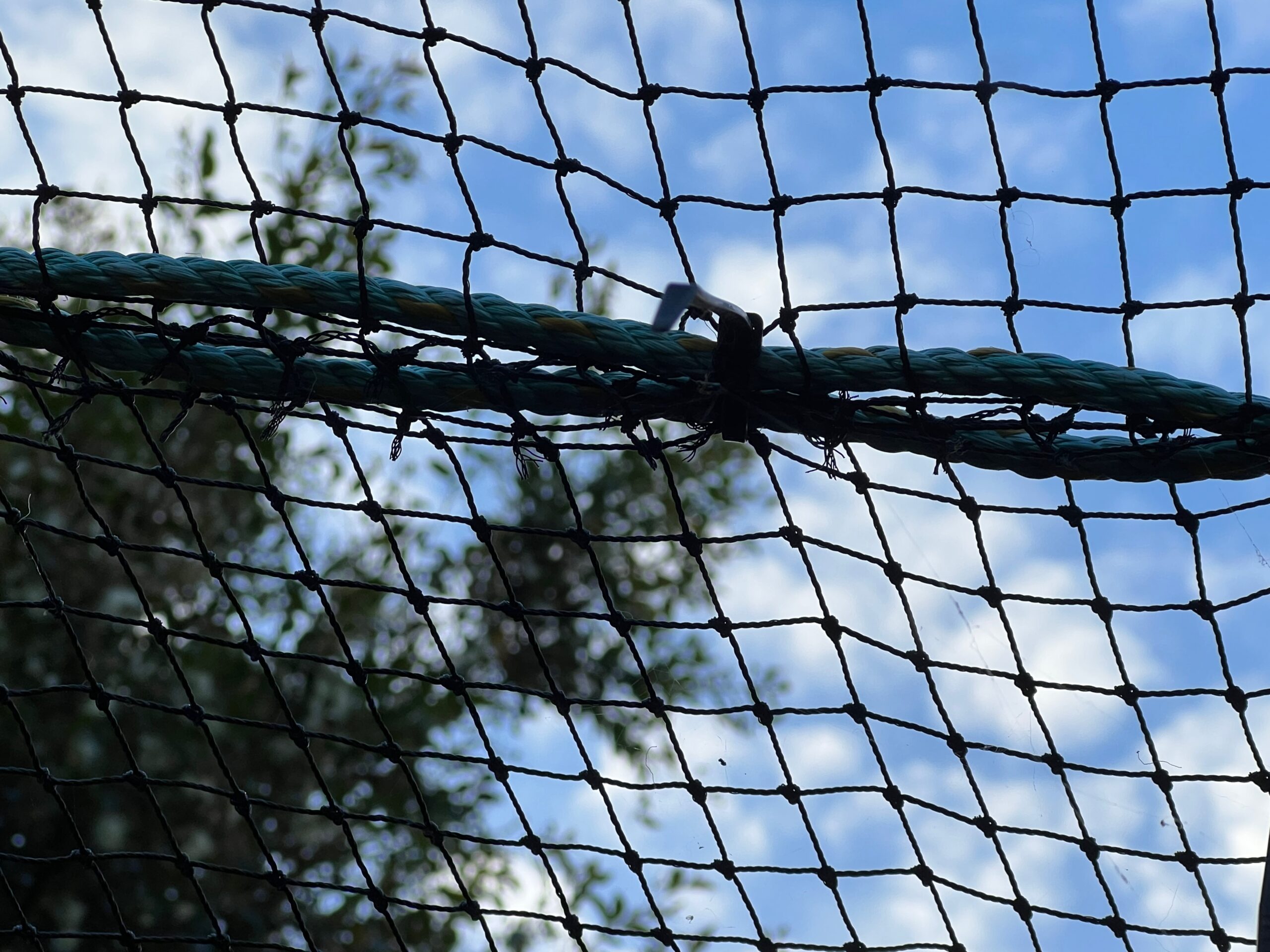
The garden has coped very well with the netting, as rain and sun still make it through. Insects still come through to pollinate fruit trees too. After a few years, I have found that some bushes will grow through the netting, seemingly unaffected by it.
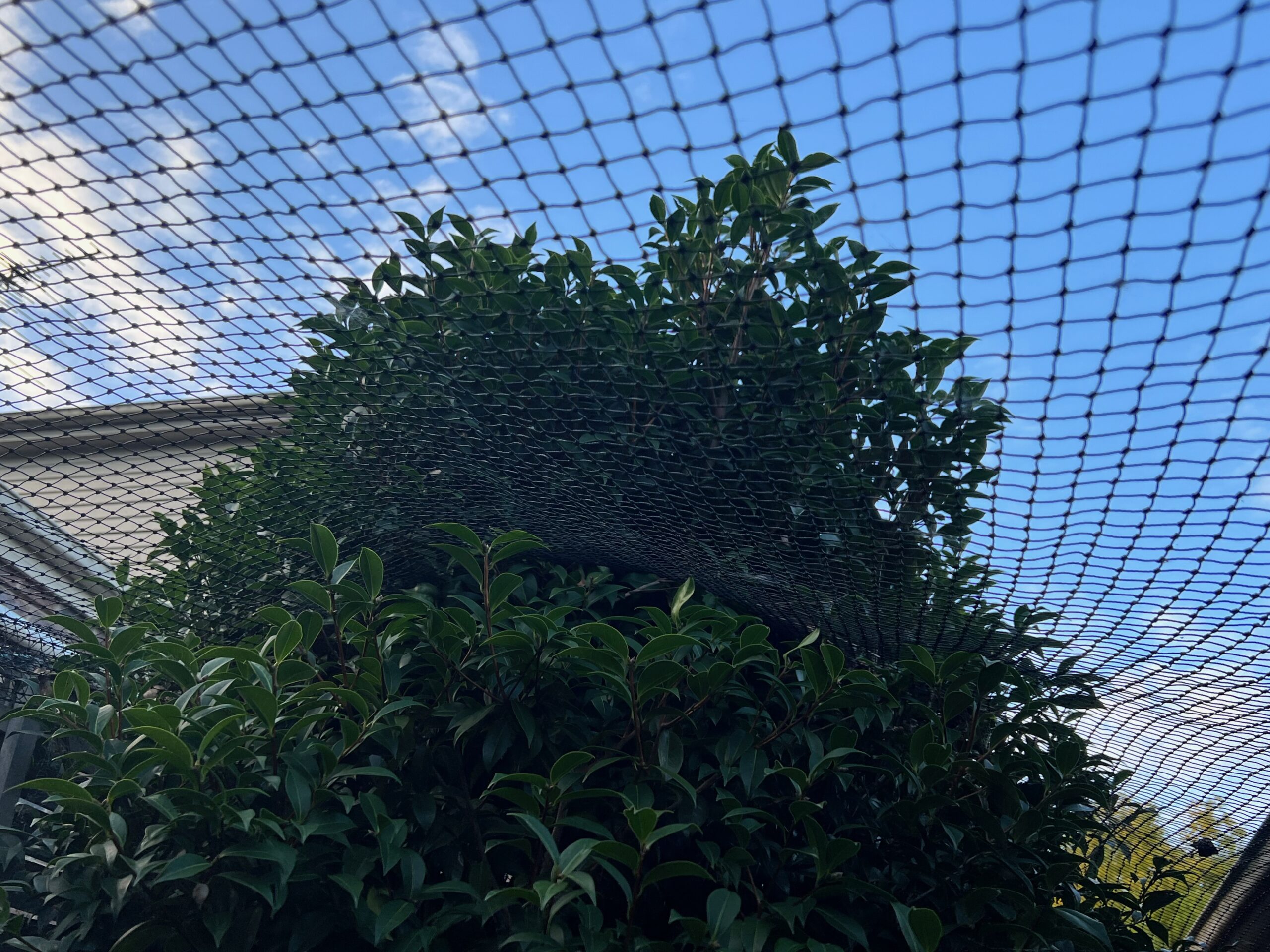
In summer, I roll out shade cloth blinds that I clip to the netting to shade a hot concrete area that both my birds and cats love to hand out on. Wild birds frequently land on the netting (they play on it like a trampoline) and as yet, I have had no damage from larger birds. That said, I supervise my birds' outside time as a determined bird will chew through anything.
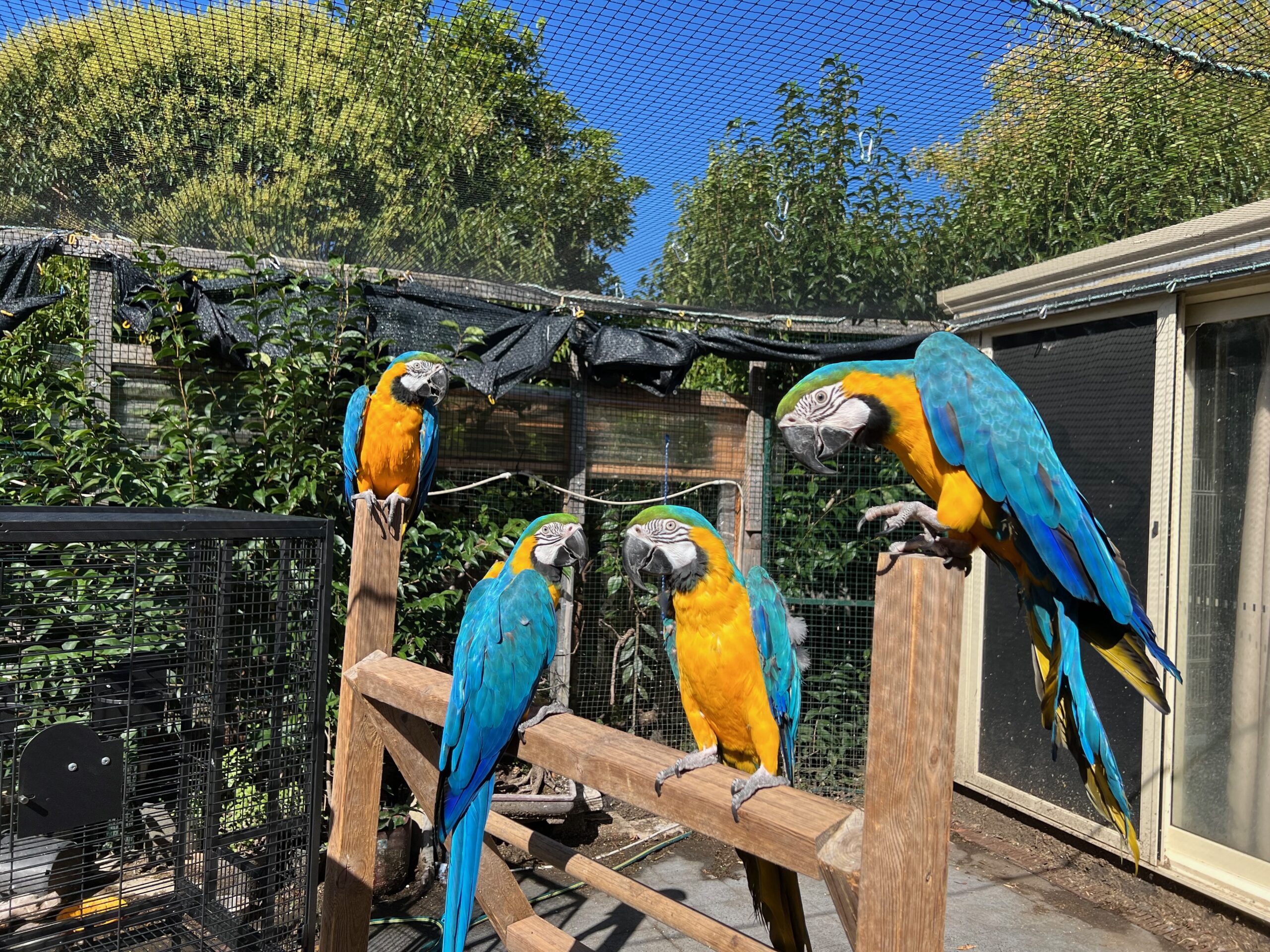
Portable Cat Enclosures
When you are renting, permanent style cat enclosure options might be impossible. A portable cat enclosure might be the best alternative for renters. These days there are more and more on the market.
Our clinic attends a lot of different pet shows and events and we frequently take along a very large cat enclosure made by catnets. The enclosure that we use is their premium triple freestanding cat enclosure. You can see it in the background behind us in this picture.

We have found this enclosure has been hardy enough to have hundreds of people tramping through it in a single day, to meet our animals. If you ever want to test a zip door - this kind of use will do it!
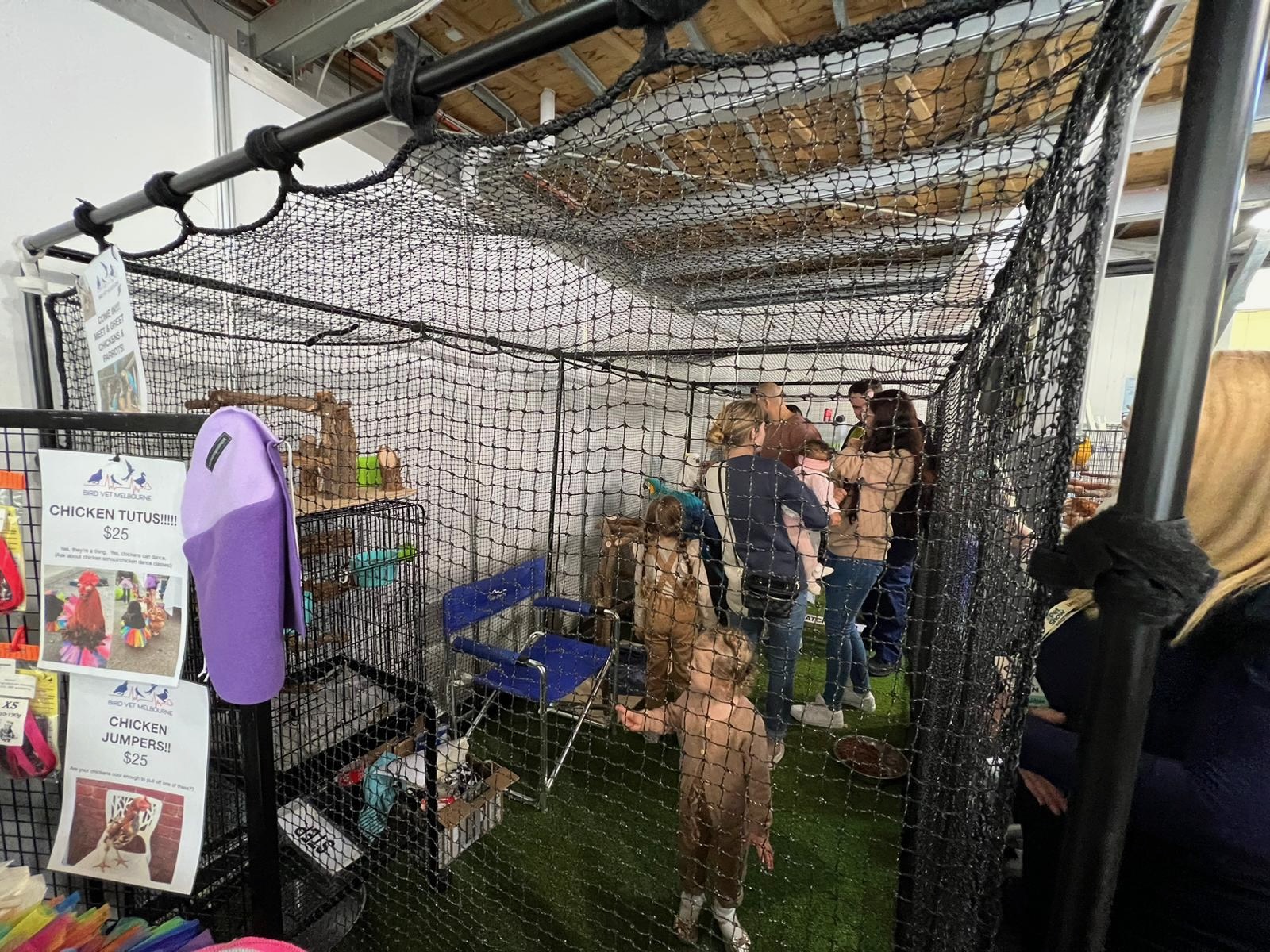
Again, the netting is reinforced with stainless steel. The framework is plastic piping. The net is attached with velcro loops and can easily be tightened with cable ties. As you can see multiple people and animals, with stands and equipment can fit inside at the same time.
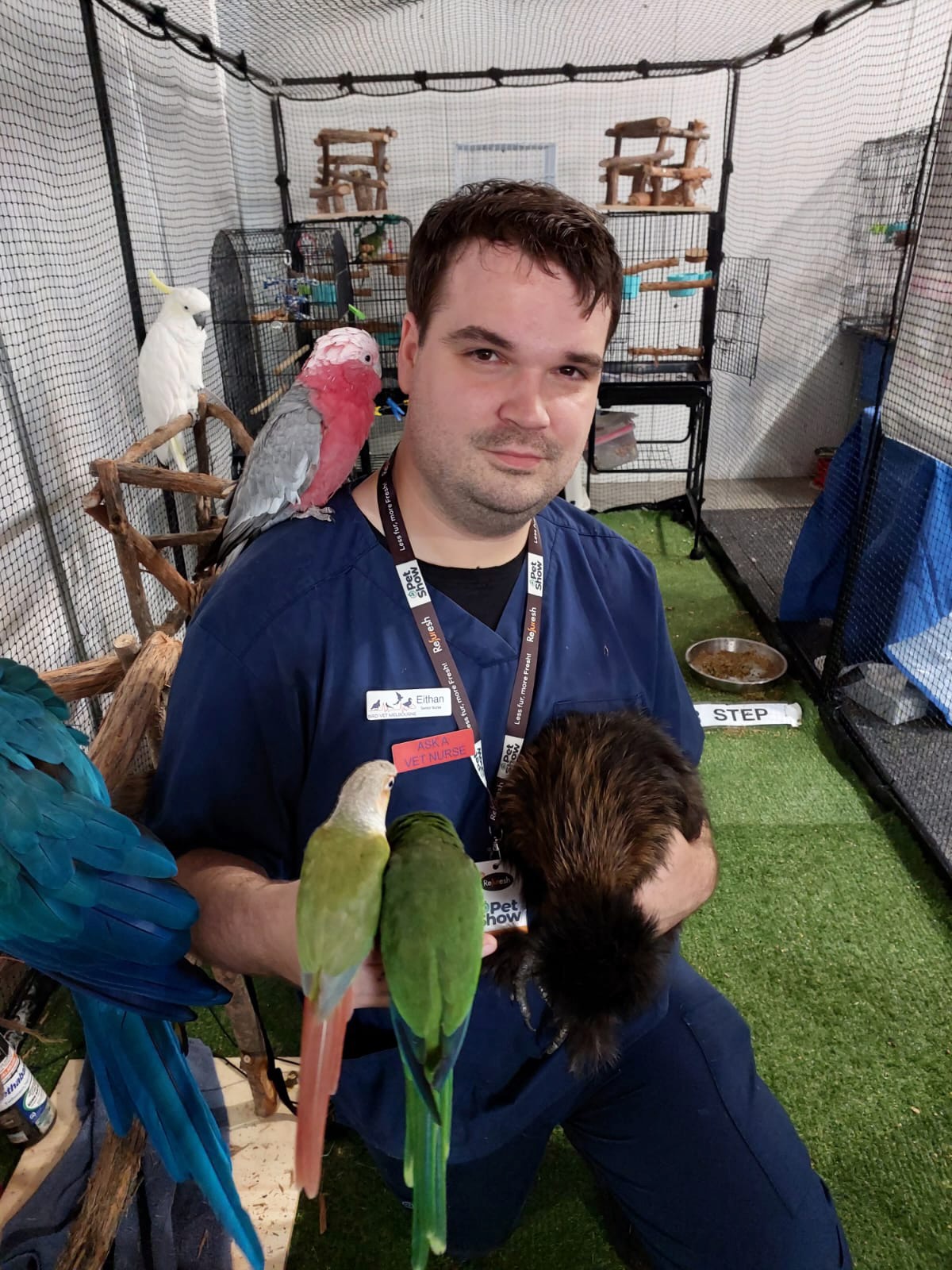
We use synthetic grass matting to cover the ground, which is very easy to hose off. These sorts of enclosures come in multiple different sizes and shapes, to fit any environment. And while we don't quite trust our parrots to spend large amounts of time unsupervised without chewing through wire (parrots basically have can openers attached to their face), we use our enclosure for flight training classes between events and as an exercise space for cats and other animals.
Interior Fittings
The only thing we haven't covered is what to put inside your cat enclosure once you have set it up. Many items can be purchased to fit your enclosure, from cat litter compartments, to hammocks and ramps. It is important to consider the following:
- Does your enclosure provide some shelter from the elements (wind, rain and sun)?
- Do you have hiding spaces?
- Is there room to run?
- Is there something to explore?
- Can you fit cat friendly plants or grasses in your enclosure?
- Can your cat escape by digging out? Is your floor adequate?
- Are your fittings weatherproof? (e.g. use marine carpet instead of normal carpet for scratching posts.)
- Have you got a water bowl available?
- Have you got emergency access?
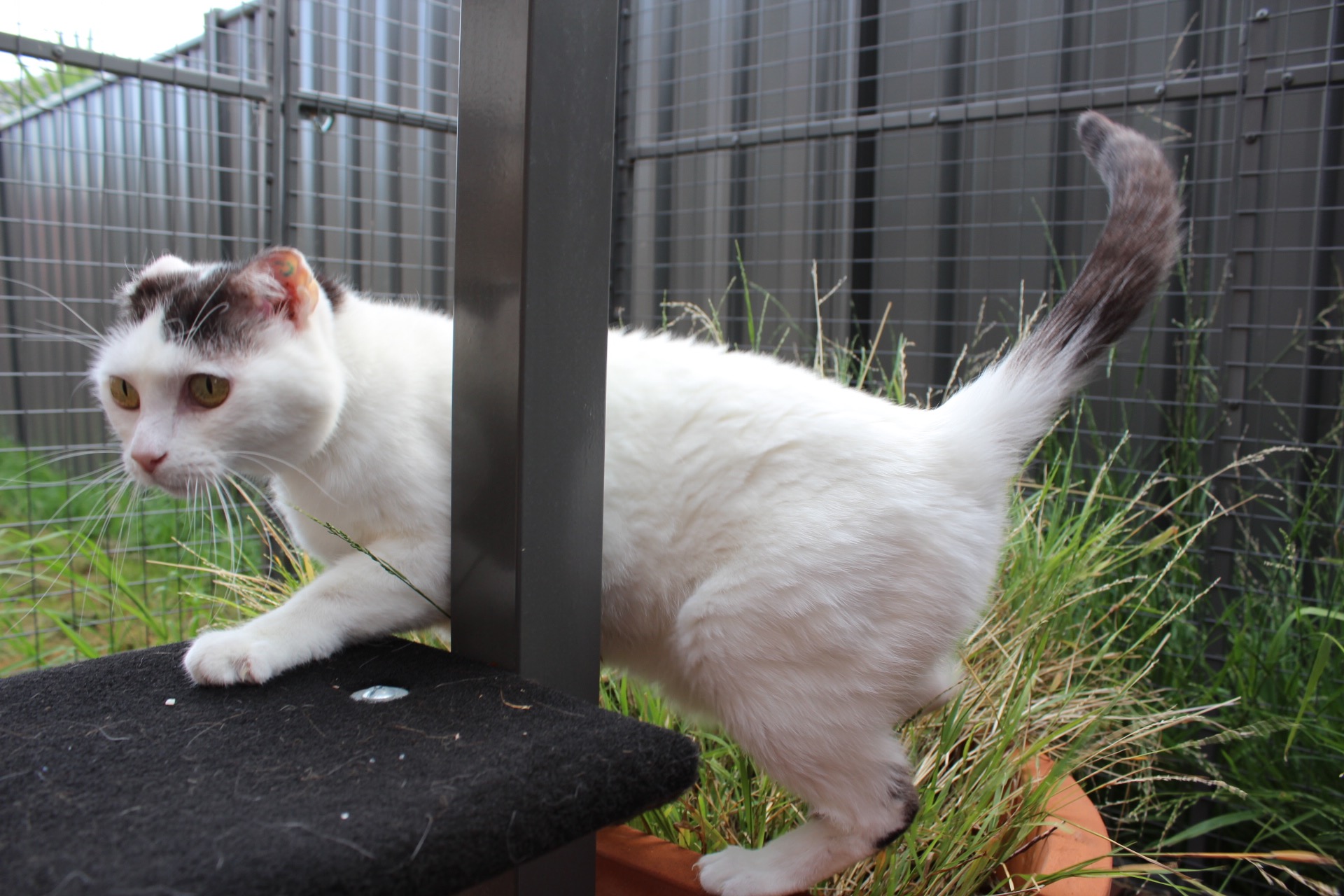
We'd love to see your setups and hear about your ideas for your own cats. Please comment below:

Written by Mel Vincent.
Mel is the the clinic's Practice Manager and is a qualified Animal Behaviourist. While she's better known for her work with birds, she's secretly been obsessed and working with cats for a long time! She currently lives with 5 of her own!
